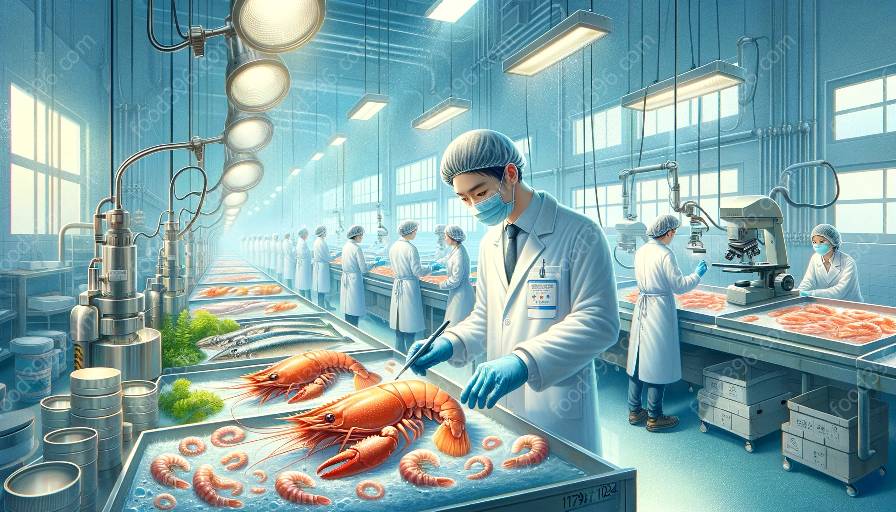Seafood is a highly popular food choice around the world, but ensuring its safety is crucial for public health. In this comprehensive guide, we will delve into the microbiological safety of seafood, exploring the importance of seafood safety and sanitation, and the intriguing field of seafood science.
Microbiological Safety of Seafood
Seafood, including fish, shellfish, and crustaceans, is susceptible to contamination by various microorganisms. These microorganisms can include bacteria, viruses, parasites, and toxins, posing potential health risks to consumers if not properly managed.
Common pathogens that can contaminate seafood include Vibrio species, Norovirus, Salmonella, and Hepatitis A virus. These microorganisms can cause foodborne illnesses, leading to symptoms such as diarrhea, vomiting, and in severe cases, life-threatening complications.
Contamination of seafood can occur at various stages, including during harvesting, processing, transportation, and storage. Understanding and mitigating these risks is essential to ensure the microbiological safety of seafood.
Importance of Seafood Safety and Sanitation
Seafood safety and sanitation practices are critical in preventing the contamination of seafood products. Proper sanitation measures, such as maintaining clean and hygienic processing facilities, equipment, and personnel, are fundamental to reducing the risk of microbiological contamination.
Furthermore, adherence to stringent safety protocols throughout the supply chain, from fishing and aquaculture to distribution and retail, is essential to safeguarding the quality and safety of seafood. This not only protects consumers but also upholds the reputation and integrity of the seafood industry.
Regulatory bodies and industry standards play a vital role in establishing and enforcing seafood safety and sanitation practices. These measures encompass hygienic processing guidelines, temperature control, traceability, and testing for pathogens and contaminants.
Seafood Science: Exploring the Fascinating World of Seafood
Seafood science encompasses a diverse range of disciplines, including food microbiology, food safety, food chemistry, and seafood product development. Researchers in this field are dedicated to understanding the complexities of seafood, from its microbiological characteristics to its nutritional value and sensory attributes.
Advancements in seafood science have led to innovations in processing technologies, packaging solutions to extend shelf life, and the development of rapid detection methods for microbial contaminants. These efforts contribute to enhancing the safety and quality of seafood products for consumers worldwide.
Furthermore, the interdisciplinary nature of seafood science fosters collaboration between experts in microbiology, chemistry, nutrition, and food engineering, driving continuous improvement in seafood safety and innovation.
Conclusion
Ensuring the microbiological safety of seafood is a multifaceted endeavor that requires a holistic approach, encompassing rigorous safety and sanitation practices, robust regulatory oversight, and ongoing advancements in seafood science. By prioritizing these critical aspects, we can savor the delectable flavors of seafood with confidence, knowing that it has been produced and handled with the highest standards of safety and quality.

